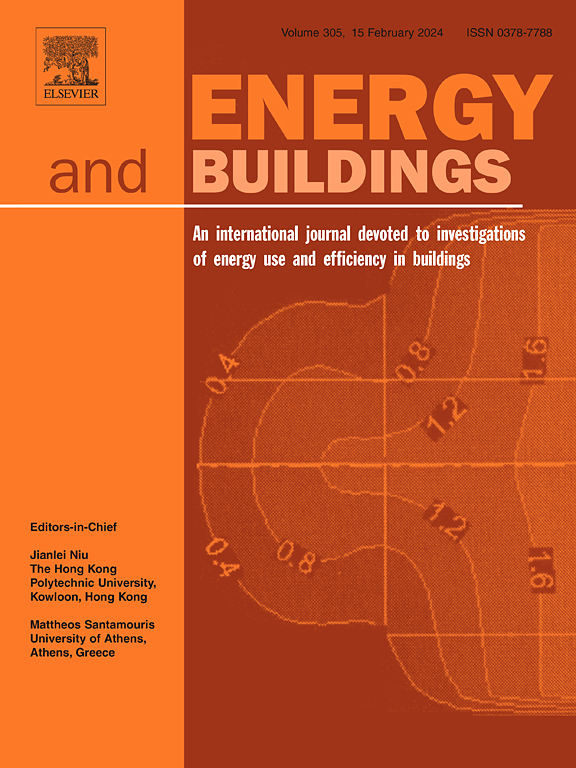Seasonal thermal performance of a macro-encapsulated phase change material blind integrated double skin façade system: An experimental study
IF 6.6
2区 工程技术
Q1 CONSTRUCTION & BUILDING TECHNOLOGY
引用次数: 0
Abstract
Double skin facade (DSF) faces problems of overheating issues in warm seasons, and low cavity temperature in cold seasons, which may reduce indoor thermal comfort and increase energy consumption in buildings. Integrating phase change material (PCM) blind in DSFs is a promising solution to improve its thermal performance. However, current research on macro-encapsulated PCM blinds lacks systematic process of system development and comprehensive experimental studies across different seasons. To overcome these limitations, a zonal method was firstly used to establish a heat transfer model for the PCM blind integrated DSF system. A prototype of the proposed macro-encapsulated PCM blinds with aluminium shell and DSF integrated system was developed. Experiments were conducted during warm season and cold season in Shanghai, China. The cavity air temperature and blind surface temperature of the integrated system were analysed and compared with aluminium alloy blind system. The results indicate that PCM blinds can significantly reduce cavity air temperature and blind surface temperature, and provided better thermal stability compared to aluminium blinds during warm seasons. In cold season, PCM blind demonstrated excellent heat sustaining ability, and can maintaining ideal cavity air temperatures, while aluminium blinds experience a significant temperature drop during the same period.
宏观封装相变材料盲板集成双层幕墙系统的季节热性能:实验研究
双层幕墙(DSF)在温暖季节面临过热问题,而在寒冷季节则面临空腔温度过低的问题,这可能会降低室内热舒适度并增加建筑能耗。将相变材料(PCM)盲板集成到 DSF 中是改善其热工性能的一个很有前景的解决方案。然而,目前有关宏观封装 PCM 百叶窗的研究缺乏系统的系统开发过程和跨季节的全面实验研究。为了克服这些局限性,研究人员首先采用分区法建立了 PCM 百叶帘集成 DSF 系统的传热模型。随后,开发出了带有铝制外壳和 DSF 集成系统的拟议宏观封装 PCM 百叶窗原型。实验分别在中国上海的暖季和冷季进行。分析了集成系统的空腔空气温度和百叶帘表面温度,并与铝合金百叶帘系统进行了比较。结果表明,与铝合金百叶帘相比,PCM 百叶帘在暖季可显著降低室内空气温度和百叶帘表面温度,并提供更好的热稳定性。在寒冷季节,PCM 百叶帘表现出卓越的保温能力,能保持理想的空腔空气温度,而铝合金百叶帘在同一时期则会出现明显的温度下降。
本文章由计算机程序翻译,如有差异,请以英文原文为准。
求助全文
约1分钟内获得全文
求助全文
来源期刊

Energy and Buildings
工程技术-工程:土木
CiteScore
12.70
自引率
11.90%
发文量
863
审稿时长
38 days
期刊介绍:
An international journal devoted to investigations of energy use and efficiency in buildings
Energy and Buildings is an international journal publishing articles with explicit links to energy use in buildings. The aim is to present new research results, and new proven practice aimed at reducing the energy needs of a building and improving indoor environment quality.
 求助内容:
求助内容: 应助结果提醒方式:
应助结果提醒方式:


